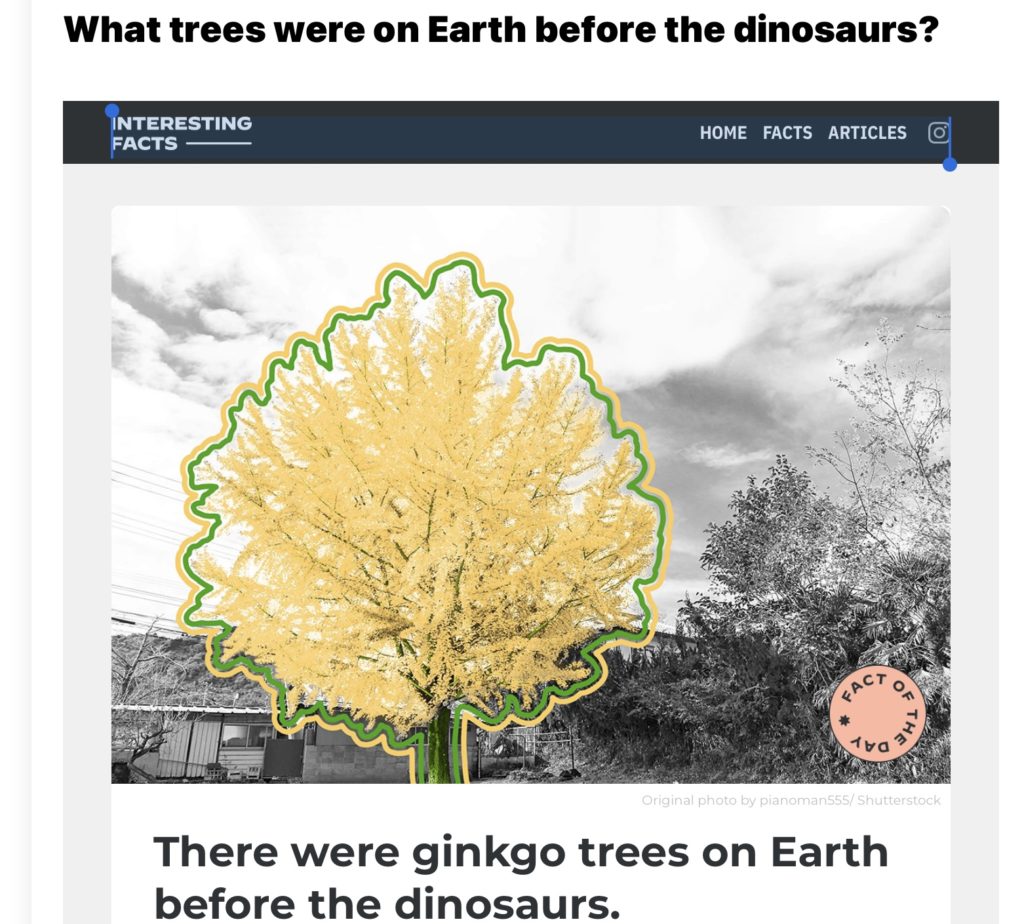Monthly Archives: February 2023
Yo Fate! I Heard You Were Looking for Me.
Factslap: One tree predates dinosaurs
There is no tree on Earth like the Ginkgo biloba. It’s the sole survivor of its genus, family (Ginkoaceae), order (Ginkgoales), class (Ginkgoopsida), and even its phylum (Ginkgophyta). In other words, it has no living relatives. Ancestors of the ginkgos now filling our parks and city streets lived on Earth 270 million years ago; for those keeping track, that means the ginkgo predates the Triassic period (aka the beginning of the dinosaurs) by a cool 18 million years. The gingko is the oldest living tree species in the world — it’s been nicknamed a “living fossil.”
However, the ginkgo tree’s historic run almost came to an end before it was saved by an unlikely ecological hero: humans. Ginkgos began declining from certain areas of the world, including North America and Europe, as the Earth started to cool 66 million years ago. By the time the last ice age ended and kicked off the Holocene epoch, the Ginkgo biloba only thrived in what is modern China, where people began planting and eating their seeds. Ginkgos then found their way to Japan and were eventually discovered in the late 17th century by German scientist Engelbert Kaempfer, who reintroduced the tree to the West.
For decades, scientists believed Ginkgo biloba was effectively extinct in the wild, only surviving through human cultivation, but small colonies of wild ginkgo have since been spotted in southwestern China. Today, the ginkgo’s beauty and hardiness make it a natural candidate for city parks and streets, and the tree can be found scattered throughout the U.S. So when you next enjoy the shade of a looming ginkgo, remember that those beautiful leaves once provided refuge for dinosaurs.



